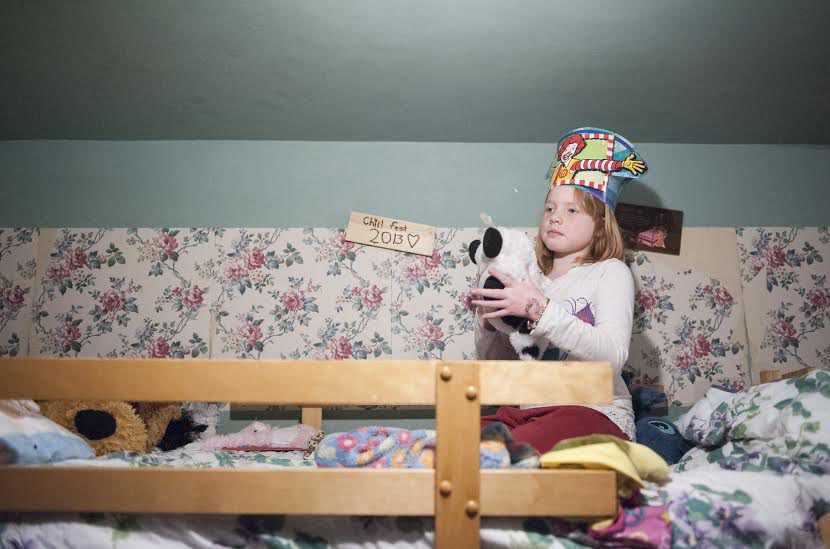The Tom Hanson Award-winning photographer explains how she captures the perfect shot.
By Christina Manocchio
Hannah Yoon is the 2014 winner of the Tom Hanson Photojournalism Award. Yoon was born in Winnipeg but grew up in Kitchener-Waterloo, Ont., where she now works as a photojournalist. She attended Wilfrid Laurier University for her Bachelor of Arts in sociology. After discovering her passion for telling stories through photography in South Korea, she later attended Loyalist College’s photojournalism program in Belleville, Ont. She does mostly freelance work in photojournalism and in wedding photography.
J-Source: How did you get into photography?
Hannah Yoon: When I was in high school and in university (I went to Wilfrid Laurier ),. I would just take pictures for fun. It was when I went on a missonary trip to Bangladesh that I became more interested in the photojournalism part of storytelling.
J-Source: How did that happen?
HY: Originally I wasn’t supposed to be the photographer. I was supposed to be the person to keep track of things, write down stuff. I brought a camera to our team meeting, and then our team leader was then, like, “Hey, Hannah, I think you should be the photographer. It’s the right thing for you to do.” I did that and I felt that I was in my element when I was doing it so. After that I started pursuing it in a serious way.
J-Source: Which cameras do you use?
HY: I have two Nikons: the D700 and the D600.
J-Source: Have you ever shot in film?
HY: I shot in film in basic 35 mm point-and-shoot camera, nothing extravagant. I mainly do digital.
J-Source: Where do you find your inspiration?
HY: Photo story ideas are often times things that I’m interested in or curious about. Some of the stuff I’ve worked on in the past is mainly because I was talking to somebody and then I heard them say something, then I was, like, oh, that would be a good story. I did something on a woman with Alzheimer’s, and my grandmother has Alzheimer’s and I’m curious about people who go through Alzheimer’s and dementia. That’s usually how I come up with story ideas.
J-Source: What kinds of challenges do you encounter with photography projects?
HY: Even just finding a subject to say yes to let you into their lives, that’s a challenge in and of it itself. A challenge can also be to take photos and put the story together and to promote that story and try to pitch it. Sometimes even just coming up with an idea and believing in the idea—sometimes I find that challenging.
I’m currently trying to work on a story on the African American community in Kitchener-Waterloo area and finding a subject to say yes.
J-Source: How did you work through the challenges?
HY: Sometimes I just leave it. I’m not letting it go, I’m just not forcing it.
J-Source: Can you tell me more about what it was like to be part of the Missouri Photo Workshop?
HY: I went to the workshop and one of the faculty works for National Geographic. He helped me rethink and learn ways to tell a photo story. My challenge was to tell the story of a widower who really doesn’t do much with his day. I learned to pay more attention to detail, to tell story of a person’s character, more of who they are than what they do. That was a really cool challenge. They [National Geographic] called me a month later and told me they were highlighting some stories from that workshops and they wanted to use one of my photos. So, that was really cool.
J-Source: What is it like to win the Tom Hanson Photojournalism Award? What sorts of opportunities arose because of it?
HY: You get to work six weeks with Canadian Press in Toronto, which is really cool. I did that in September 2014, and right away I was working at Toronto International Film Festival doing the press conferences. I learned how to work on a team, to take photos, write captions and send them in really quick. I got to shoot Toronto Blue Jays, Maple Leafs, Argonauts and the prime minister. After my internship, my boss told me about an opportunity to work at the 2015 Torch Relay.
J-Source: Do you enjoy photojournalism more than wedding and staged photography?
HY: I like weddings: I treat them as an event, as if I’m doing a story. I prefer the storytelling maybe the more documentary-type work because it is more personal.
J-Source: What’s your advice for aspiring photojournalists?
HY: Make connections with editors where you can because the industry is based on who knows who. Just shoot whenever you can, look at a lot of stories on other blogs. Look at the New York Times, Globe and Mail, Toronto Star. Just keep shooting.
Christina Manocchio is heading into her fourth year of journalism at Wilfrid Laurier University. She currently is the photography editor and design manager at the Sputnik.

